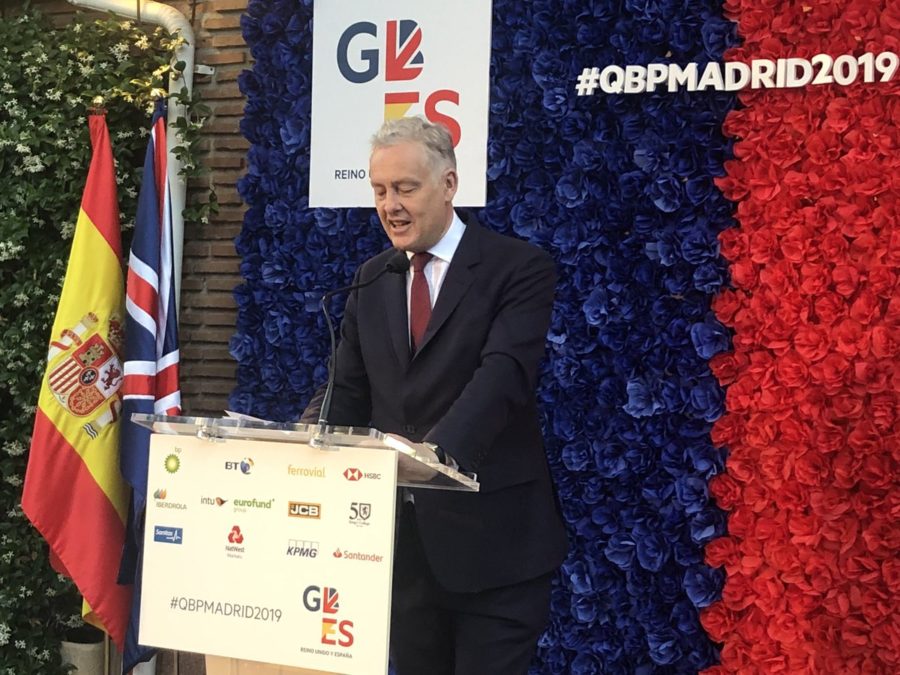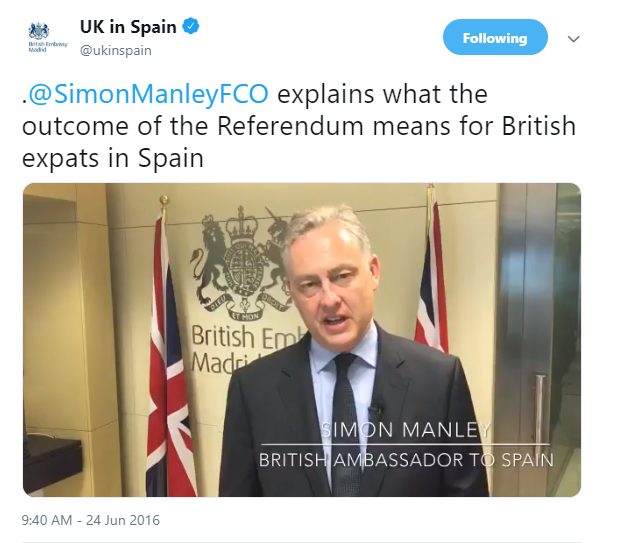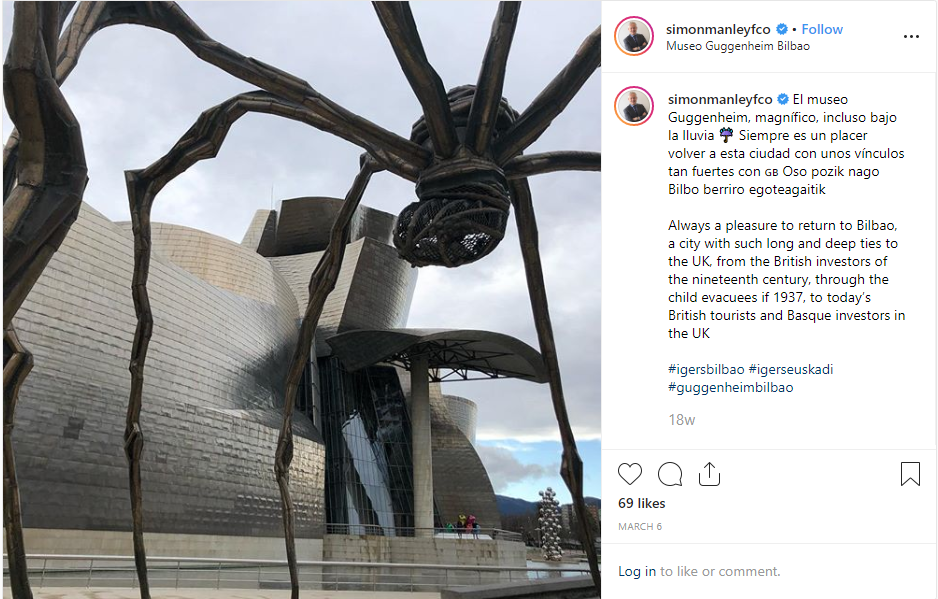18th July 2019 Madrid
Digital Diplomacy – learning by doing

A few weeks ago I spoke to some FCO new entrants about social media and diplomacy. They were quite an intimidating audience not least since I assumed that most of them had already forgotten more about social media than I would ever learn.
I explained how digital diplomacy had been perhaps the area of my work as a Head of Mission (HoM) in which I had learned and developed most in my six years here in Spain. Mind you, I started as a digital virgin. Back in 2013, I had no social media presence, whether personal or professional. My first tutors were and continue to be my teenage daughters: along with my excellent digital media officer: they tell me what’s new, what’s cool, and (more to the point) what’s not.
So, what have I learned over the last few years?
That digital diplomacy allows us to speak directly to audiences to which we had only ever been able to speak indirectly, if at all. That includes many young people.
That it allows us to scale up the reach of our diplomacy. A video we shot the day after the EU referendum, aimed at the 300k+ Brits who live in Spain was viewed by 800k. The recent Facebook Live Q&A sessions we held for those same British nationals were viewed by almost 50k people; that’s well over 200 times as many people as attended any one of our 200 or so outreach meetings across Spain on the same issue.

It also allows new opportunities to develop the relationships that are at the heart of diplomacy – I use Instagram in particular to reach out to top Spanish politicians. One prominent MEP referred to me as his Instagram pal when he met one of our Ministers. Perhaps there’s no surprise that our professional relationships should be the same mix of digital and analogue as our private ones.
And for digital diplomacy to be effective it has to be:
Strategically driven – in our case by our Country Business Plan, comms strategy and Brexit engagement plan which are all about three Bs: Brexit, bilateral, and brand
Audience savvy – we need to know who we are trying to convince, and of what, and what they currently think of us. We rely a lot on some excellent Visit Britain data on Spanish attitudes. And we have a range of different channels for those different audiences (e.g. specific Facebook and Twitter channels for Brits living in Spain).
Coherent – digital diplomacy isn’t some separate sphere of activity; it’s an additional tool to those we already had, and what we do digitally has to be coherent with the rest of our activity
Planned – even if it looks spontaneous, it’s at its best when it’s thought though from the planning stage of an event or campaign, right through to post-campaign analysis of impact.
Visual – in my almost six years in Spain social media has become much more image driven: so I need to think what are the images that we need to tell the story? (my driver has become used to me asking if we can stop off at some spot in or Barcelona with a particular UK link so that I can have a photo ready for use later)
/

/
Diverse – not just me or my Deputy Head of Mission (DHM), but a range of voices: that’s been particularly useful on Brexit comms to UK nationals in Spain, using consular or DHSC staff to explain the details of healthcare, residency, etc. Theirs are more credible voices than mine.
Partnered – working with credible voices, with greater social media reach, can take our message further and into corners we would otherwise struggle to capture. We reached an audience of 12 million for our celebration of 100 years of female suffrage in the UK by partnering with Spain’s best known female TV journalist and some young influencers (the Suffragette coloured food and drink helped too)
Timely – like any other form of media work, if we want our social media to influence the wider media story, it needs to be leading the media cycle, not a few days behind it.
And most important of all…
Authentic – my posts and tweets have to sound like me. Indeed they have to sound like a human being, not a ministry spokesman. So, I also post a range of material that reflects who I am, including images of my family or my morning runs around Spain as I try to run off the effects of all that excellent jamón and jerez.